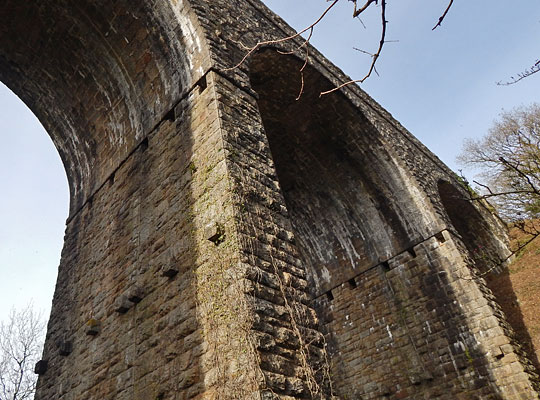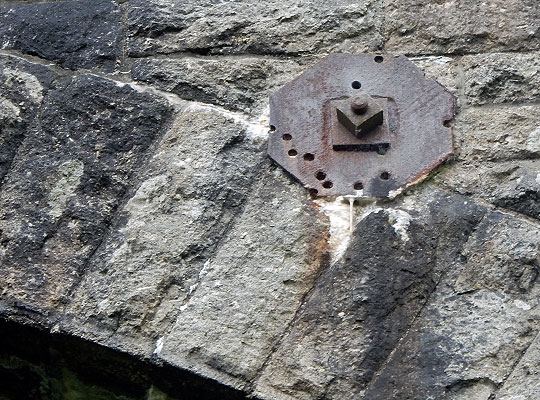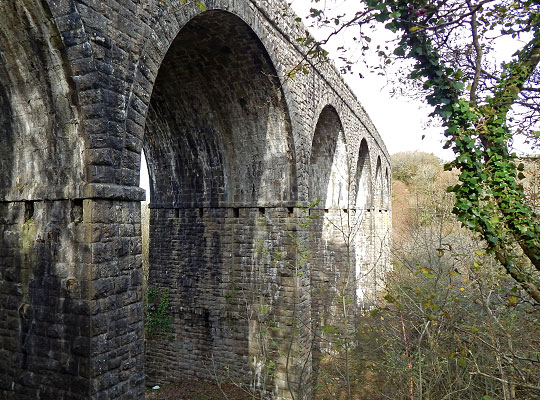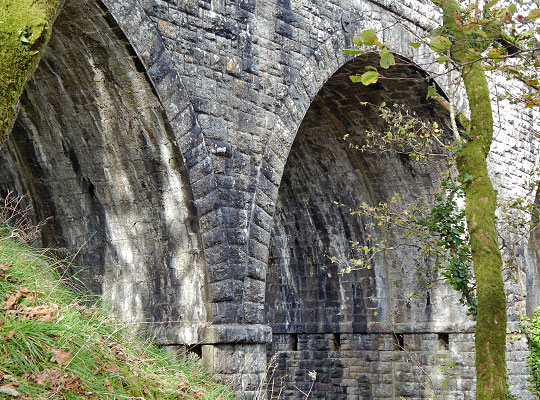Lake Viaduct
Lake Viaduct


















On 17th July 1862, Parliamentary assent was granted for a new line connecting Exeter and Okehampton, via a junction at Colebrooke. Before construction started, the London & South Western Railway (L&SWR) obtained it under lease and secured authority for an extension through to Lydford where it would meet the South Devon Railway’s Tavistock branch, thus establishing a link into Plymouth.
Work got underway in 1864 under the Devon & Cornwall Railway, with opening taking place in several stages. The first train pulled into Okehampton on 3rd October 1871 whilst Lydford was reached on 1st October 1874, by which time the L&SWR had assumed full ownership.
Almost ten miles in length, the Okehampton-Lydford section was heavily engineered, traversing the undulating Devon countryside with a ruling gradient of 1:60. Around 700,000 cubic yards of material was excavated – mostly rock – and a collection of large structures built, most notably the surviving wrought iron viaduct over the West Okement at Meldon. Although the line was opened as a single track, the overbridges could accommodate two from the outset and the route was doubled in 1878.
Overseeing the engineering were William Robert Galbraith – who served as the L&SWR consulting engineer for more than 40 years – and his partner Richard Frederick Church. Chief Resident Engineer was William Jacomb – a former pupil of I K Brunel – whilst R T Relph was appointed as contractor. Colonel Hutchinson inspected the railway for the Board of Trade on 11th September 1874.
Nearly 1,000 feet above sea level, the summit of the line was located in a cutting near Sourton; to its south, a falling gradient of 1:78 was enjoyed on the section over Lake Viaduct. The structure extends for 140 yards, comprising nine arches – each 40 feet in span – and reaches a height of 70 feet; a curve of approximately 45 chains in radius is encountered throughout.
Construction was attended by a least one fatal accident. On 2nd December 1873, John Ellis, a 21-year-old labourer, slipped on scaffolding and fell 30 feet to the ground. He was taken home and medical attention sought, but he succumbed to his injuries after a few hours.
Built entirely in granite, the viaduct remains an attractive addition to the local landscape. Below the imposts, its piers still exhibit the byot holes into which timberwork for the arch centring was inserted. Projecting stones are also visible at a lower level to support scaffolding.
Calcite extensively coats the arch barrels – suggesting longstanding issues with water penetration – and all clearly feature a construction joint resulting from the viaduct’s widening in 1878 to accommodate a second track. The newer part is to the east side. Pattress plates and tie bars have been installed at the high haunches to restrain the spandrels.
The Granite Way – Route 27 of the National Cycle Network – now occupies the deck, creating a trail between Okehampton and Lydford. Protecting its users are rubble-built parapets topped with substantial dressed coping stones. At the base of the west parapet is a kerb accommodating holes which allow surface water to drain into a channel beneath. Seating is also provided.
Exeter-Plymouth services were withdrawn from the route on 6th May 1968, although passenger trains continued to serve Okehampton until 5th June 1972. The section to Meldon Quarry was also retained for freight. Since 1997, a limited summer Sunday service has run to Okehampton from Exeter, whilst the Dartmoor Railway operates heritage trains between Meldon Quarry and Sampford Courtenay.
Following the disruption to coastal rail services caused by storms in February 2014, Network Rail has investigated the reopening of the Okehampton-Tavistock line as an alternative to the existing main line.







